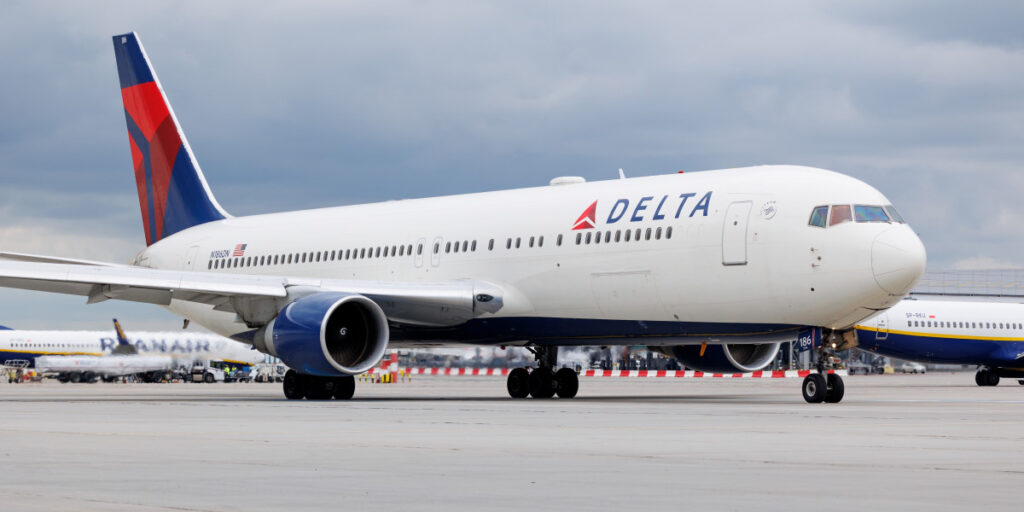Delta Flight DL275: A Real Example of Aviation Safety in Action
On May 28, 2025, a routine long-haul trip across the Pacific Ocean turned into an unexpected detour that showcased modern aviation safety at work. Delta Flight DL275, operating from Detroit Metropolitan Wayne County Airport (DTW) to Tokyo Haneda Airport (HND), was forced to divert and land at Los Angeles International Airport (LAX) after a mid-air technical issue was detected.Flight Overview
Delta Flight DL275 is a daily international route connecting Detroit with Tokyo Haneda. It typically takes about 13 hours, carrying both business travelers and tourists across the Pacific. For this journey, Delta deployed an Airbus A350-900, tail number N508DN, powered by Rolls-Royce Trent XWB engines. This aircraft is known for long-range efficiency, passenger comfort, and cutting-edge safety technology.
Timeline of the Diversion
- The aircraft arrived late into Detroit from Amsterdam (as DL133), delaying its Tokyo departure.
- DL275 finally left Gate A46 at 15:53 local time, climbing to 38,000 feet en route to Japan.
- Roughly five to six hours into the flight, while cruising over the Bering Sea, the crew identified a problem with the engine anti-ice system.
- Safety procedures required a diversion, and the flight was rerouted toward Los Angeles.
- After more than 12 hours in the air, the aircraft landed safely on Runway 06R at LAX at 01:08 AM local time.
Why Did the Flight Divert?
Engine Anti-Ice System Malfunction
The diversion was caused by a malfunction in the engine anti-ice system. This system prevents ice from forming on engine components while flying through extremely cold air at high altitudes. Without it, continuing across the Pacific would have posed unnecessary risks.
Why Not Anchorage or Seattle?
Although Anchorage and Seattle were closer, Los Angeles was chosen because it is a Delta hub with:
- Certified A350 maintenance teams
- Specialized spare parts available
- Strong passenger handling facilities for hundreds of international travelers
This made LAX the most practical and safest choice for both passengers and the airline.
Passenger Experience & Crew Response
Calm Communication
Passengers reported that the flight attendants and pilots remained calm and professional. Clear announcements reassured travelers that the diversion was precautionary, not an emergency.
Social Media Buzz
Hashtags like #DL275 and #DeltaDivertedLAX trended as passengers shared updates and flight trackers captured the unusual route. Many praised Delta’s crew for prioritizing safety and handling the situation transparently.
What Happened at LAX
Emergency Response
As a standard precaution, emergency crews were on standby when DL275 landed. The aircraft touched down smoothly without incident.
Passenger Care & Rebooking
Delta quickly provided:
- Hotel rooms and meal vouchers
- Transportation assistance
- Rebooked flights to Tokyo and other hubs
The airline’s swift action minimized disruption and earned positive feedback from travelers.
Aircraft Inspection
The aircraft stayed on the ground for nearly 19 hours while Delta’s maintenance team thoroughly inspected the anti-ice system. After checks and repairs, the jet safely returned to service.
Similar Delta Diversions That Day
DL275 wasn’t the only affected flight:
- DL2346 (New York LGA to Miami) diverted to JFK due to a loud noise.
- DL2286 (New York JFK to Atlanta) diverted to Charlotte after smoke was noticed in the cockpit.
While unrelated, these incidents sparked industry discussions about preventive maintenance and the value of robust safety protocols.
Aviation Safety Takeaways
- Real-Time Decisions: The diversion highlighted quick decision-making between pilots, airline operations, and air traffic control.
- Aircraft Reliability: The A350 remains one of the most reliable long-haul jets, but this case proved why backup systems and trained crews are essential.
What Is an Engine Anti-Ice System?
The system prevents ice buildup on engine inlets and fan blades by redirecting heated air from the engines. Without it, airflow and performance could be compromised. Aviation guidelines recommend avoiding long oceanic flights if the system is impaired, which is why DL275 diverted.
How Delta Handled the Diversion
From communication to rebooking, Delta’s handling of DL275 was seen as organized and professional. Their quick support reinforced trust among international passengers and demonstrated why safety-first policies are non-negotiable in aviation.
Lessons for Passengers on Long-Haul Flights
- Always keep essentials (passport, chargers, medicines, snacks) easily accessible.
- Expect diversions as part of standard safety procedures.
- Stay calm and follow crew instructions.
- Use airline apps for real-time updates.
Industry & Media Coverage
Aviation outlets such as FlightAware, SimpleFlying, and AviationA2Z covered the diversion extensively. Industry experts praised Delta’s crew and operations team for turning a potential risk into a safe outcome.
Final Thoughts
The diversion of Delta Flight DL275 shows how well-trained crews, advanced aircraft technology, and strong airline operations can transform an unexpected challenge into a case study in safety. Although passengers arrived later than expected, the safe landing at LAX and Delta’s rapid passenger support proved that safety always comes first in aviation.
FAQs
Q: Why did Delta DL275 divert?
A: Due to a malfunction in the engine anti-ice system.
Q: Was anyone injured?
A: No, the landing was safe and smooth.
Q: How long was the flight in the air?
A: About 12 hours and 15 minutes.
Q: Why Los Angeles and not Anchorage?
A: LAX has Delta’s A350 maintenance facilities and better passenger rebooking options.
Q: Did Delta assist travelers after the diversion?
A: Yes, passengers received accommodations, vouchers, and rebooked flights.


